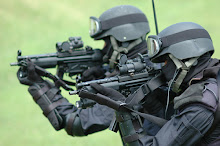
The 9K38 Igla (Russian: 9К38 «Игла́»; English: needle) is a Russian/Soviet man-portable infrared homing surface-to-air missile (SAM). "9K38" is the GRAU designation of the system. Its NATO reporting name is SA-18 Grouse.
History
Development of the Igla short-range man-portable air defence missile (MANPADS) began in the Kolomna OKB in 1971. Contrary to what is commonly reported, the Igla is not an improved version of the earlier Strela family (Strela-2/SA-7 and Strela-3/SA-14), but an all new project. The main goals were to create a missile with better resistance to countermeasures and wider engagement envelope than the earlier Strela series MANPADS systems.
Technical difficulties in the development quickly made it obvious that the development would take far longer than anticipated, however, and in 1978 the program split in two: while the development of the full-capability Igla would continue, a simplified version (Igla-1) with a simpler IR seeker based on that of the earlier Strela-3/SA-14 would be developed to enter service earlier than the full-capability version could be finished.
The 9K310 Igla-1 system (NATO reporting name SA-16 Gimlet) and its 9M313 missile were accepted into service in the Soviet army on 11 March 1981. Main differences from the Strela-3 include:
Optional IFF (Identification-Friend-or-Foe) system to prevent firing on friendly aircraft. Automatic lead and super elevation to simplify shooting and reduce minimum firing range. Slightly larger rocket, reduced drag and better guidance system extend maximum range and improve performance against fast and maneuverable targets. Improved lethality on target achieved by a combination of delayed impact fusing, terminal maneuver to hit the fuselage rather than jet nozzle, and an additional charge to set off the remaining rocket fuel (if any) on impact. Improved resistance to infrared countermeasures (both decoy flares and ALQ-144 series jamming emitters). Slightly improved seeker sensitivity. According to the manufacturer, South African tests have shown the Igla's superiority over the contemporary (1982 service entry) but smaller and lighter American FIM-92A Stinger missile. However, other tests in Croatia did not support any clear superiority, but effectively equal seeker performance and only marginally shorter time of flight and longer range for the Igla.
According to Kolomna OKB, the Igla-1 has a Pk (probability of kill) of 0.30 to 0.48 against unprotected targets which is reduced to 0.24 in the presence of decoy flares and jamming. In another report the manufacturer claimed a Pk of 0.59 against an approaching and 0.44 against receding F-4 fighter not employing infrared countermeasures or evasive manoeuvers.
History
Development of the Igla short-range man-portable air defence missile (MANPADS) began in the Kolomna OKB in 1971. Contrary to what is commonly reported, the Igla is not an improved version of the earlier Strela family (Strela-2/SA-7 and Strela-3/SA-14), but an all new project. The main goals were to create a missile with better resistance to countermeasures and wider engagement envelope than the earlier Strela series MANPADS systems.
Technical difficulties in the development quickly made it obvious that the development would take far longer than anticipated, however, and in 1978 the program split in two: while the development of the full-capability Igla would continue, a simplified version (Igla-1) with a simpler IR seeker based on that of the earlier Strela-3/SA-14 would be developed to enter service earlier than the full-capability version could be finished.
The 9K310 Igla-1 system (NATO reporting name SA-16 Gimlet) and its 9M313 missile were accepted into service in the Soviet army on 11 March 1981. Main differences from the Strela-3 include:
Optional IFF (Identification-Friend-or-Foe) system to prevent firing on friendly aircraft. Automatic lead and super elevation to simplify shooting and reduce minimum firing range. Slightly larger rocket, reduced drag and better guidance system extend maximum range and improve performance against fast and maneuverable targets. Improved lethality on target achieved by a combination of delayed impact fusing, terminal maneuver to hit the fuselage rather than jet nozzle, and an additional charge to set off the remaining rocket fuel (if any) on impact. Improved resistance to infrared countermeasures (both decoy flares and ALQ-144 series jamming emitters). Slightly improved seeker sensitivity. According to the manufacturer, South African tests have shown the Igla's superiority over the contemporary (1982 service entry) but smaller and lighter American FIM-92A Stinger missile. However, other tests in Croatia did not support any clear superiority, but effectively equal seeker performance and only marginally shorter time of flight and longer range for the Igla.
According to Kolomna OKB, the Igla-1 has a Pk (probability of kill) of 0.30 to 0.48 against unprotected targets which is reduced to 0.24 in the presence of decoy flares and jamming. In another report the manufacturer claimed a Pk of 0.59 against an approaching and 0.44 against receding F-4 fighter not employing infrared countermeasures or evasive manoeuvers.

No comments:
Post a Comment